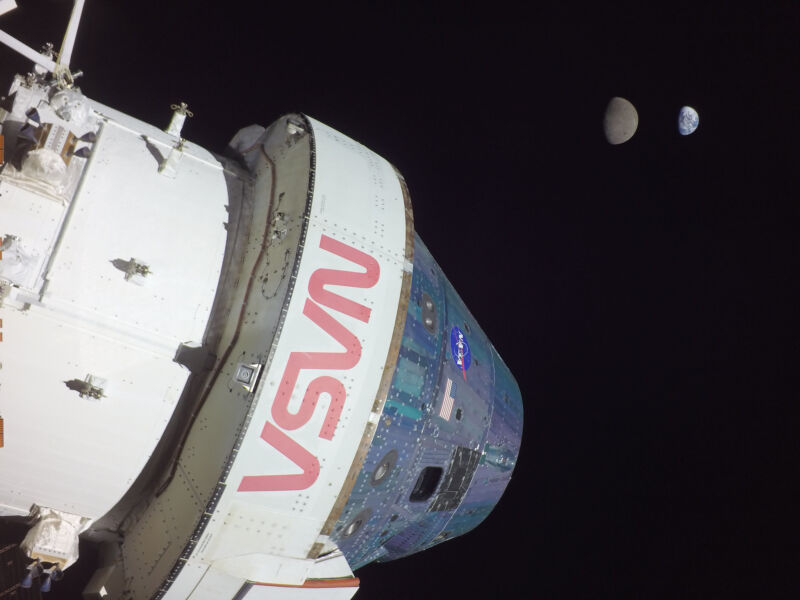
NASA's Orion spacecraft reached the farthest outbound point in its journey from Earth on Monday, a distance of more than 430,000 km from humanity's home world. This is a greater distance from Earth than the Apollo capsule traveled during NASA's lunar missions in the late 1960s and early 1970s.
From this vantage point, on Monday, a camera attached to the solar panels on board Orion's service module snapped photos of the Moon and, just beyond, the Earth. These were lovely, lonely, and evocative images.
"The imagery was crazy," said the Artemis I mission's lead flight director, Rick LaBrode. "It’s really hard to articulate what the feeling is. It’s really amazing to be here, and see that."
LaBrode was speaking during a news conference at Johnson Space Center in Houston, where he and other NASA officials provided an update on the mission's progress to test the Space Launch System rocket and Orion spacecraft. This uncrewed test flight is a precursor to crewed missions later this decade, including a lunar landing on the Artemis III mission.
After its successful launch, mission manager Mike Sarafin said the agency now has full confidence in the Space Launch System rocket. "The rocket is proven," he said.
Orion still has work to do, of course. Its mission will not be complete until the spacecraft maneuvers back around the Moon, returns to Earth, survives reentry into the atmosphere, splashes down into the ocean, and is recovered off the coast near San Diego. That is scheduled to occur on December 11.
However, the mission is going so well that NASA has decided to add objectives, such as firing various thrusters for longer than intended to verify their performance. This work will further increase NASA's confidence in the Orion capsule and the propulsive service module provided by the European Space Agency.
Overall, 31 of the Artemis I mission's 124 baseline objectives are complete, Sarafin said. Many of these pertain to the performance of the launch vehicle. Of the remaining objectives, one half is in progress, and the other half has yet to be started. Most of these remaining objectives are related to landing back on Earth, such as the parachute deployment system.
Understandably, NASA's engineers are thrilled by the performance of Artemis I so far. It was a long, bumpy, and costly development path to reach this mission with the Space Launch System rocket and Orion spacecraft. But once the vehicles began flying, their performance met every expectation and hope of the space agency, increasing confidence in the future of the Artemis program to explore the Moon.
reader comments
223